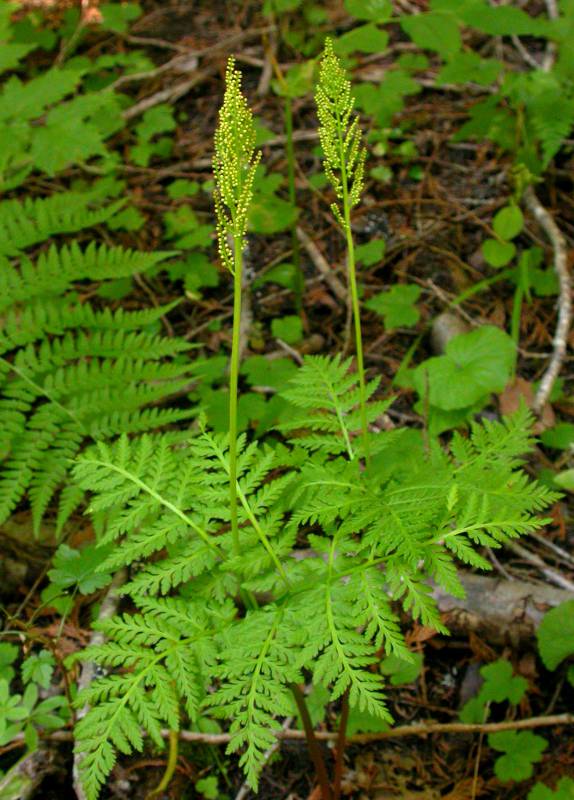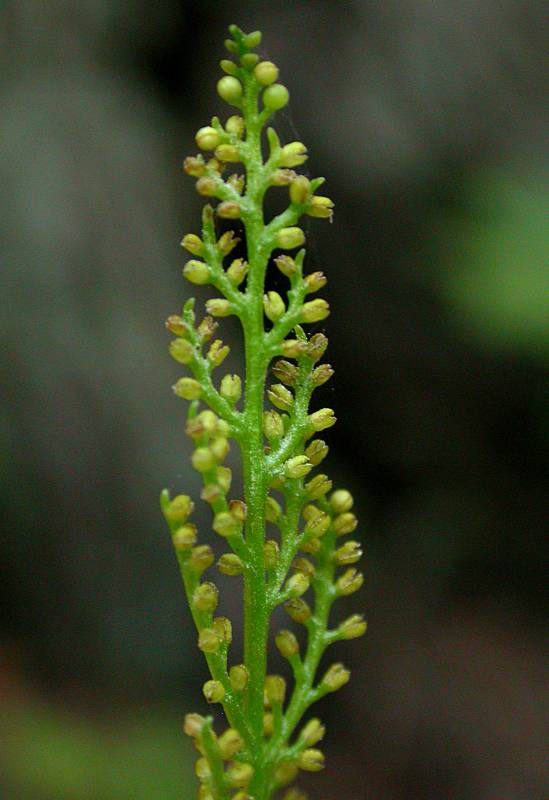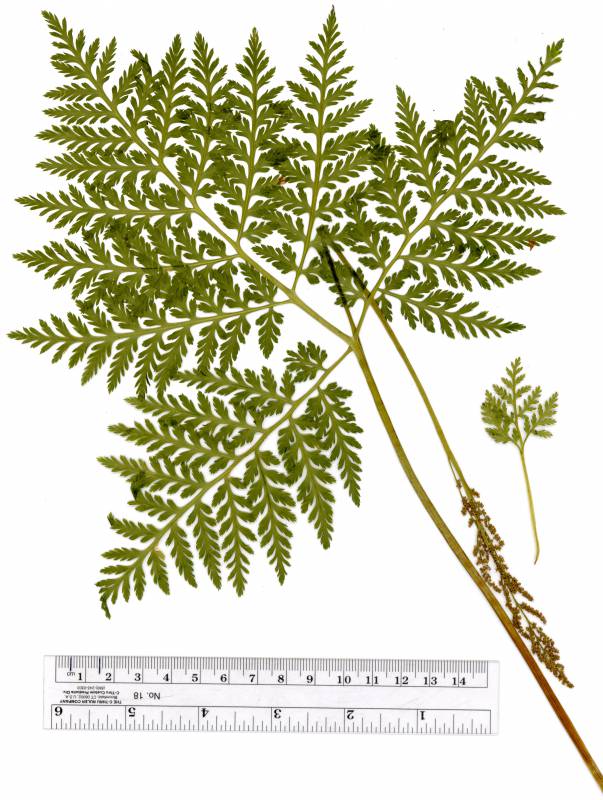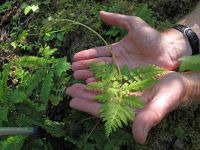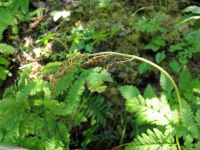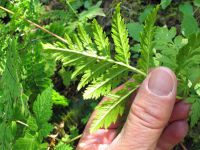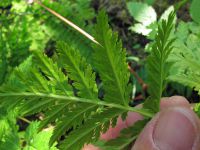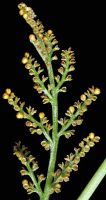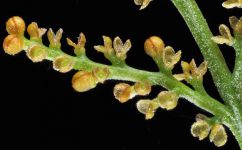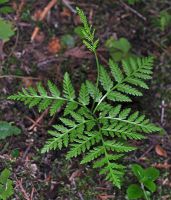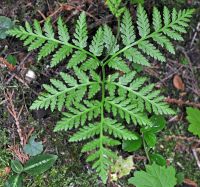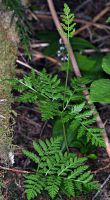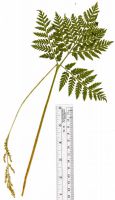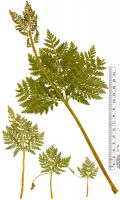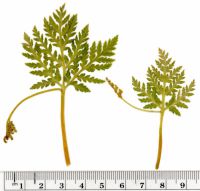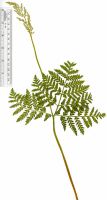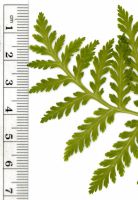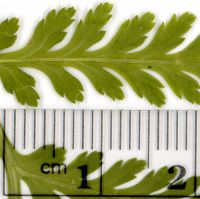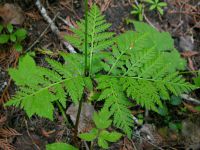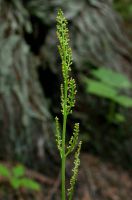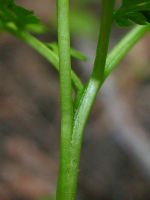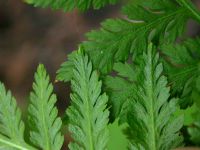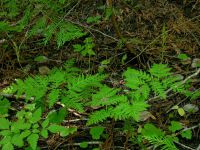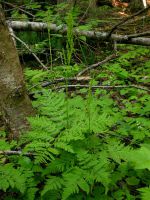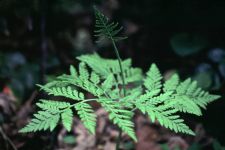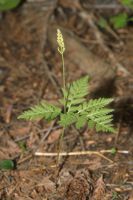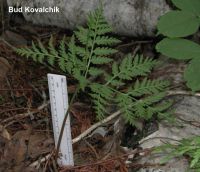Distribution: Occurring chiefly west of the Cascades crest and in the northeastern counties in Washington; Alaska to California, east across most of North America to the Atlantic Coast; also in Eurasia.
Habitat: Moist woods and thickets, seldom in meadows, from valleys to middle elevations in the mountains.
Origin: Native
Growth Duration: Perennial
Conservation Status: Not of concern
Terrestrial perennials 12 cm or taller, from 15 or fewer yellow to brown roots 0.5-2 mm in diameter at 1 cm from base.
Trophophore blade pale green, herbaceous and thin, 3-4-pinnate, up to 25 cm long and 33 cm broad, sessile; trophophore pinnae in up to 12 pairs, slightly ascending, space between 1st and 2nd pinnae equal to or slightly greater than the spaces between 2nd and 3rd pairs, lanceolate, divided to apex; pinnules lanceolate with deep lobes, lobes linear, toothed, apex pointed, venation pinnate, midrib present; sporophores on long and slightly flattened stalks 0.5-0.8 mm wide, 2-pinnate, 0.5-1.5 times the length of the trophophore.
Sporangium nearly completely exposed, borne in 2 rows on pinnate sporophore branches; Spore surfaces wrinkled and somewhat warty.
Publication: Fl. Bor.-Amer. (Michaux) 2: 274. 1803.
Osmunda virginiana L.
PNW Herbaria: Specimen records of Botrypus virginianus in the Consortium of Pacific Northwest Herbaria database
WA Flora Checklist: Botrypus virginianus checklist entry
OregonFlora: Botrypus virginianus information
E-Flora BC: Botrypus virginianus atlas page
CalPhotos: Botrypus virginianus photos

